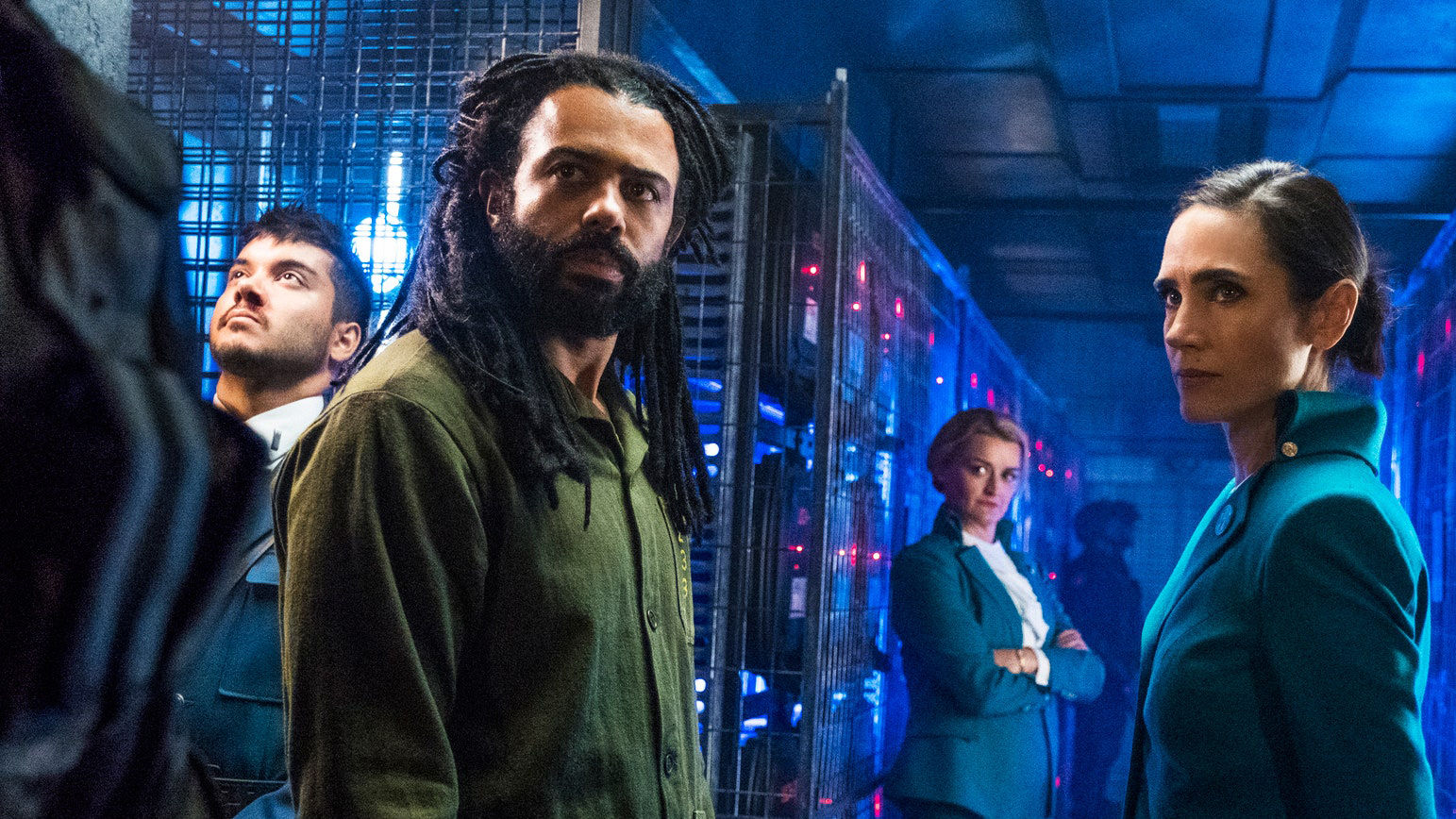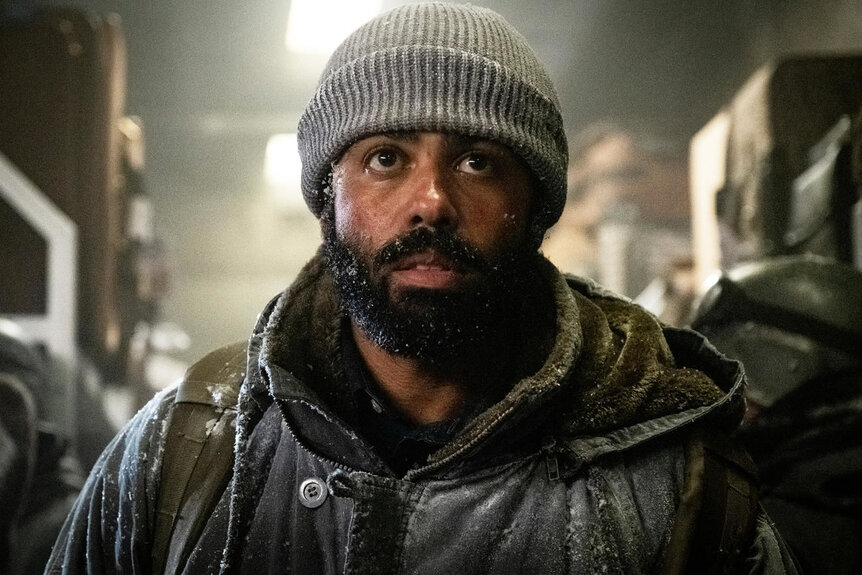Create a free profile to get unlimited access to exclusive videos, sweepstakes, and more!
Snowpiercer's Daveed Diggs explains how the show breaks beyond Bong Joon-Ho's movie

If you’re getting a little stir-crazy after being quarantined in your home for weeks, keep in mind that it could always be worse. You could be trapped on a dystopian train, making endless loops around a frozen, post-apocalyptic world. Daveed Diggs, the star of TNT’s new Snowpiercer series, was expecting the show to be relevant, but not necessarily in this way.
“The reason I said yes to the show all those years ago was because it felt super relevant to what was happening in the world, and every minute of life since then, it has felt particularly relevant,” Diggs tells SYFY WIRE. “What’s interesting about this show — and I think all good science fiction — is that you can view it through the lens of your current time, and it will speak to it. It allows us to learn or reexamine something about our current situation. I had no idea that this would be the lens through which we’re all viewing it through, but there you go.”
Take away the pandemic-induced claustrophobia, and Snowpiercer still has plenty of relevance to modern society. The story, based on the 1982 French graphic novel Le Transperceneige, tells the story of a 1,001-car-long train that holds the last remnants of humanity after the world plunges into a man-made ice age that’s so cold nothing can survive outside. The passengers at the back of the train live in squalor, while those up front in first class live a life of luxury. Bong Joon-Ho adapted the title into a cult-hit movie starring Chris Evans in 2013, ramping up the central metaphor about class and inequality as you might expect from the man who would go on to direct Parasite.
The TV show — which is not part of the same canon as the movie — has a little bit more room to explore what life and society on Snowpiercer would be like, even if the train cars are still a little cramped.
“The incredible thing about that film is that it’s a heist,” Diggs says. “All they’re doing is running from the back of the train to the front. It’s so action-packed and never stops, but you still manage to get a sense of some of the class issues at play. You do end up feeling for people, and that’s Bong Joon-Ho’s signature. That’s what he’s so great at.
“What we have the luxury of, on TV, is spending time,” he continues. “We don’t have to be as linear now that we have way more than 90 minutes. We don’t have to just run from the back of the train to the front, we can move back and forth and learn things slowly, spend time in each class and understand the motivations behind everybody’s choices.”
As Andre Layton, a member of Snowpiercer’s underclass known as the “Tailies,” Digg has plenty to discover. The Tailies boarded Snowpiercer when it first left the station, seven years ago, and since they didn’t have tickets, they live on scraps at the mercy of the train’s crew — like the imposing Head of Hospitality, Melanie Cavill (Jennifer Connelly). However, when there’s a murder further up on the train, the higher-ups suddenly need Layton’s talents, as he was a homicide detective before the world ended. Tasked with solving a murder for a society that treats his people lower than dirt, Layton might have a chance to bring equality to Snowpiercer — or die trying.
“Layton’s idea of Snowpiercer is that it is a fortress to class,” Diggs says. “He is fundamentally opposed to that, and is using this opportunity to try to figure out a way to make things better for his people in the tail and dismantle this class system.”
It’s natural that viewers will want to side with Layton and the rest of the Tailies as a class war looms, but Snowpiercer’s 10-episode first season run means there’s time to get to know some of the people in first class and the crew. Is Melanie Cavill a villain, or is she simply making the hard decisions in order to save the rest of humanity? Whether or not you think the ends justify the means, Diggs says it was important to everyone making the show that the characters all were coming from grounded, understandable places.
“Heroes and villains sort of do a disservice to our ability to understand the logic of things. When we’re talking about class, when we’re talking about limited resources, and when we’re talking about these things that are big ideas but ones that we interact with all the time, it’s really important to be able to understand the motivations,” Diggs says, adding that the cast helped make suggestions on set to ensure that the actors and their characters understood everyone’s motivations.
“It was so important to everybody that you could understand the choice that everyone made,” he says. “That’s the only way we’re able to see ourselves in anyone, and that I think is the necessary complication of this issue. You have to understand people’s choices.”
Because TNT’s Snowpiercer isn’t just a rush from the caboose to the engine, there’s time for viewers — and Layton — to learn more about how the train functions, for better and for worse. There’s also time, Diggs hopes, for viewers to admire the sets, which squeeze tons of visual flare and details into what are essentially narrow hallways. “There are so many little details in all of the train cars,” he says, noting the way that the Tailies’ furniture is made from repurposed luggage, or how the first-class dining car changes with the season.
Diggs wants viewers to admire Snowpiercer, but as with Bong’s movie, he also wants them to think, and there will be plenty to consider. The metaphor about class that serves as the show’s engine is the same as in the film, and Diggs says it powers a world that he’s excited to keep exploring — even if it’s just those same 1,001 cars.
“The world felt expansive enough and interesting enough that we could keep learning and keep going, despite it being a closed system,” Diggs says.















